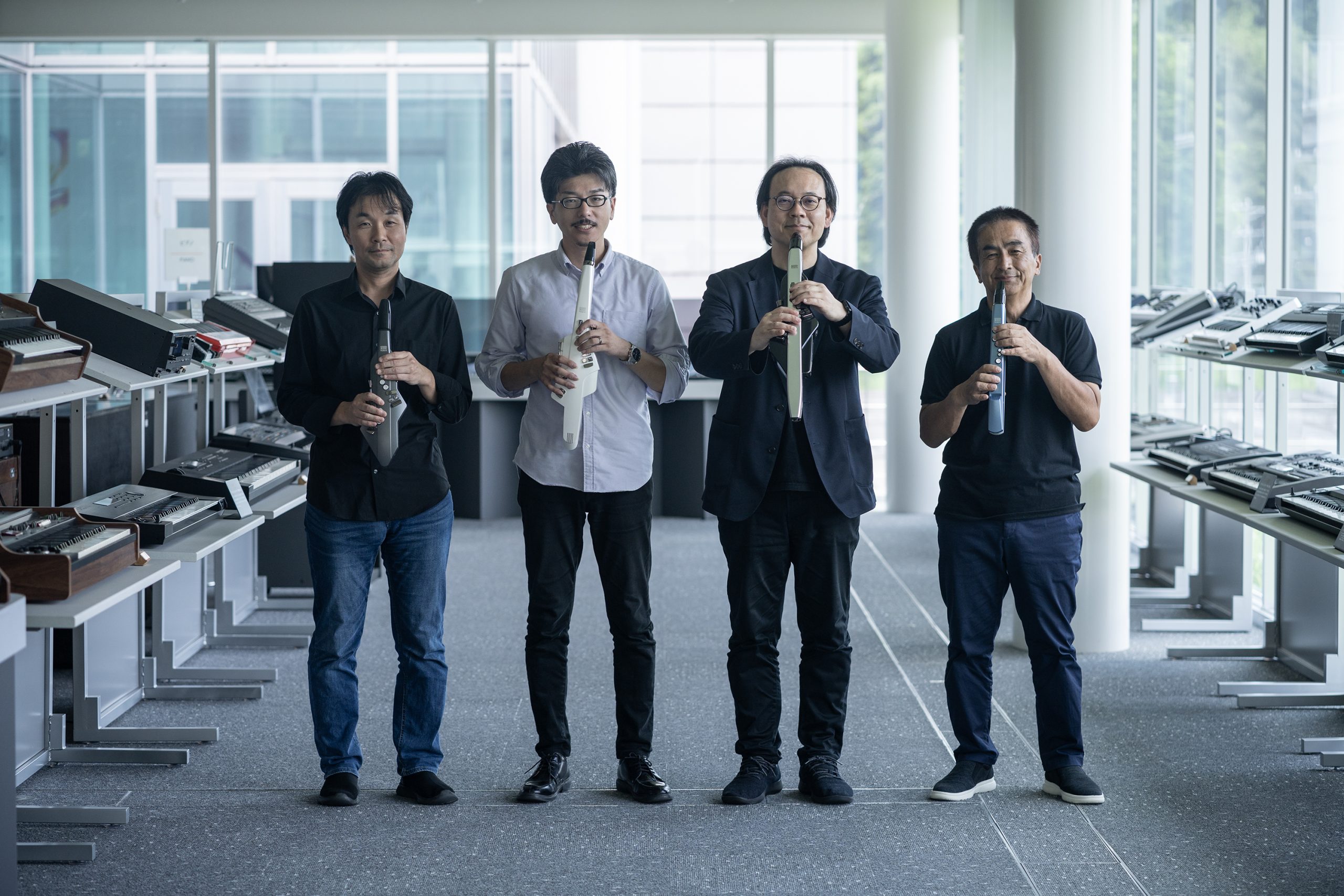In September 2016, Roland introduced its first electronic wind instrument, the Aerophone AE-10. Behind the cutting-edge device was a team of dedicated engineers pushing the technology forward. Flash forward to today, and there are five models in the lineup, from the entry-level AE-01 to the flagship AE-30, as well as color variants. Meet the talents behind the Aerophone and learn about the instrument’s journey from concept to fruition.

Seed of an Idea
We can trace the project’s origins back to 2014 on an internal Roland message board called—appropriately enough—Idea Seeds. An employee with wind instrument experience was having dinner with colleagues when an idea came to him. He soon posted it to the site.
Terada, the current Aerophone product leader, explains. “I thought by combining Roland’s SuperNATURAL sound engine with the mechanism and sensors of a V-Accordion, which produces sound when air passes through it, we could create an electronic wind instrument that could produce a realistic saxophone sound,” he says. “The president of the company at the time liked the idea and officially launched the project.”
A Unified Concept and Team
Soon, Terada formed a development team. While researching existing electronic wind instruments, they arrived at a unified product concept: a brand-new electronic wind instrument utilizing the same fingerings as a saxophone.
“There was no point in making an existing instrument,” Terada shares. “So we decided to create a brand new instrument with the same fingerings as a saxophone, one that saxophonists could switch to and start playing immediately.”
"We decided to create a brand new instrument with the same fingerings as a saxophone, one that saxophonists could switch to and start playing immediately."
Yuji Terada
Kentaro Mori was in charge of hardware design for the fledgling instrument. “The saxophone is a difficult instrument to play quietly or with no sound at all, and there is no way to muffle the sound when practicing,” Mori says. “So we also wanted to propose a new digital instrument for saxophone players to practice on at home.”
The team finalized the specifications so that even inexperienced saxophonists could appreciate the instrument. They also decided it should be battery-operated and have a small, built-in speaker so users could play it independently.
Challenges and Solutions
An outside designer assembled the first design draft. Next, a veteran Roland in-house designer finalized it from an industrial design perspective. During the early stages, the team based the Aerophone aesthetic on the dolphin. Indeed, traces of the aquatic mammal remain in the streamlined body, an enduring visual characteristic. But it wasn’t all smooth sailing.
“Designing the Aerophone was tough,” lead designer Fumihiko Miura confirms. “Since we were creating a new instrument that had never existed, it was also very intriguing. It gave us the chance to think outside the box.”
Creating a brand-new instrument was similarly tricky in terms of internal components. Ryohei Kanayama, head of mechanical design, details the challenges. “With a digital piano, there are already many products available, and you can go through the steps of, ‘Let’s make a new piano,’” Kanayama explains. “But this was a completely new instrument, and there was nothing to base it on. Also, existing products from other companies were structurally different from the one our team was trying to create.”

“Since we were creating a new instrument that had never existed, it was also very intriguing. It gave us the chance to think outside the box.”
Fumihiko Miura
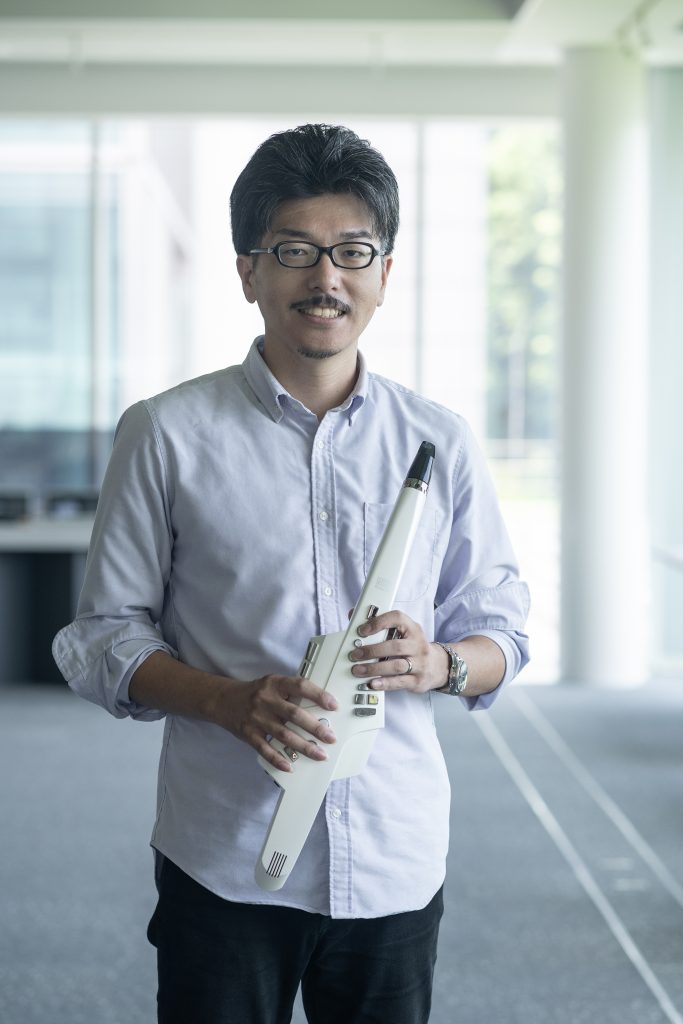
Still, the demands were not unanticipated. “I was prepared to work very hard on this,” Kanayama says. “Honestly, I couldn’t help but think it would be a tough job.”
The development team faced an ongoing process of trial and error. How would the body be shaped? Where should the buttons be placed, and what functions would they control? The hardware and mechanical engineers returned to these issues nearly daily.
A Race Against Time
In addition, complications arose around the development schedule. As the first model of a new instrument, the team needed enough time to perfect the design, button layout, and other specifications. However, the project had a fixed release date from the start of development. This meant the longer it took to confirm the specs, the less time for mechanical design. Plus, incorporating the circuit boards into the main unit required a specific amount of time, an inflexible constraint.
“We couldn’t help but make an unusual schedule because of this,” Kanayama says. “Normally, we settle on the shape of the main unit first and then design the circuit board based on it.” Aerophone required an entirely different tack. “In this case, if we waited until the body shape was finalized, we would not have been able to meet the schedule. So we had no choice but to start the circuit board design first.”
Mori picks up the story. “We had to ask the engineers to change the shape of the chassis to accommodate the circuit board, which we had already finished,” he recalls. “We had to apologize to them many times.”
“We had to ask the engineers to change the shape of the chassis to accommodate the circuit board, which we had already finished.”
Kentaro Mori

Mouthpiece and Sound Design
In terms of hardware, the mouthpiece design was the most difficult element. The Aerophone mouthpiece is unique in the realm of electronic wind instruments and has no Roland predecessors.
“There is a metal bar called a bite bar inside the mouthpiece that detects subtle changes in vibration of less than 1 mm in the reed,” Mori explains. “However, in the first AE-10 model, we designed this part with a split structure, resulting in an assembly error of more than 1 mm.”
The team found a swift solution. “For the first model, we installed an additional hardware adjustment mechanism in an area the player can’t reach. Then we fine-tuned the sensing in each unit individually after assembly.”
The design included a waterproofed mouthpiece to protect against the build-up of saliva, a natural result of performance. Still, although the team planned carefully, the saliva issue became a more significant problem than anticipated with the AE-10. For the AE-05, the engineers enhanced the waterproofing and eliminated the sensing issue in one fell swoop. The AE-05 became the cornerstone of Aerophone design, and all subsequent models reflect this.
The SuperNATURAL sound engine necessitated tweaking to function in the context of a wind instrument. “SuperNATURAL was developed to be played on a keyboard. This was our first attempt to play it using breath-sensing,” Terada explains. “After much trial and error, I could finally get the breath curve down and get most of the forty tones on the AE-10 adjusted by blowing on a test model myself.”

"In this case, if we waited until the body shape was finalized, we would not have been able to meet the schedule."
Ryohei Kanayama
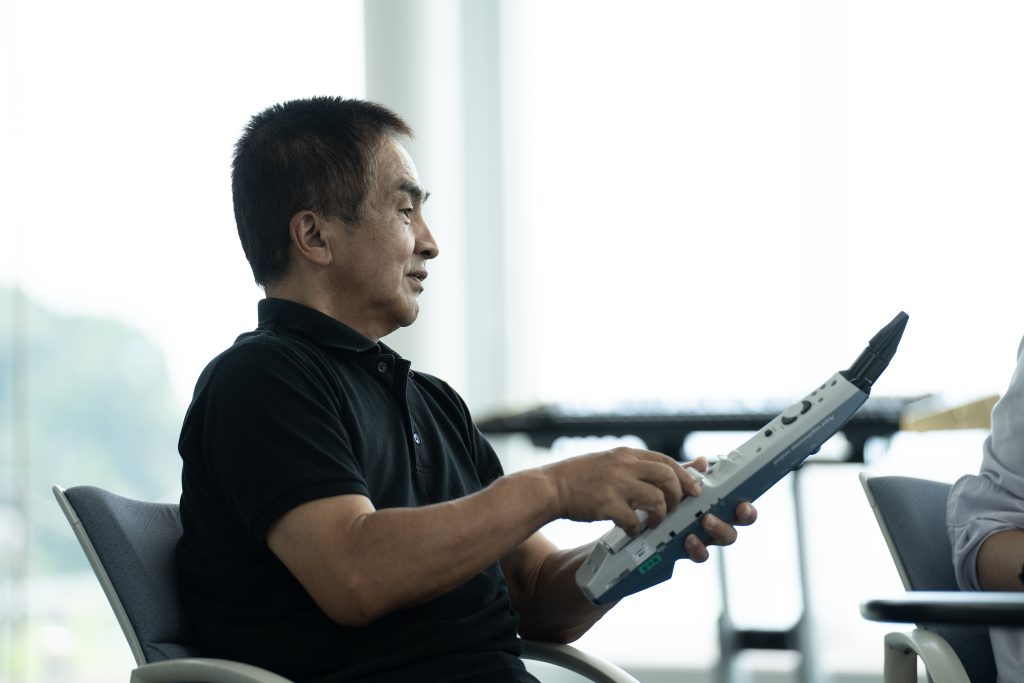

Exceeding Expectations
When the AE-10 appeared, the user response was extremely positive. Terada says, “It exceeded our expectations, and to be honest, we never imagined it would sell this well.” Roland decided to make it a series, something it hadn’t initially planned. One year later, a graphite black model of the AE-10, the AE-10G, debuted, followed by its younger brother, the AE-05, in 2018. The smaller AE-01 came in 2019, with the flagship AE-30 in 2021 and the AE-20 in 2022.
Terada has a hunch about why the Aerophone has been so well-accepted by users worldwide. “It was probably a good thing that we didn’t go too far in a synth-like direction.”
In the past, many wind synth users liked digital instruments and wanted to play synths via breath control. Following this trend, synth-inspired models became popular. Yet, after the 2010s, the wind synth market got saturated, resulting in very few new instruments.
“We released the Aerophone into this market, and some asked, ‘Why now?’ However, when the Aerophone went on sale, many people who’d never heard of wind synthesizers got excited,” Terada says. “There were, of course, saxophone players, but also senior citizens and many others who felt they could now try playing the saxophone. I think this was a really big part of its appeal.”
The Aerophone is popular in Japan and China, and the AE-30, with its synth-like functionality, has many fans in Europe and the United States. Its high-quality sounds, including rare exotic wind instruments, make it a favorite with pro musicians.

Innovation and Consistency
The conceptual innovation of the Aerophone defined the project from the start. Unsurprisingly, the development team has many thoughts and dreams about how the instrument will evolve.
“We want to add models to our lineup that are easy for children and adults of all ages to play,” Mori says. “We also want to add models for use in schools and other educational settings.” The engineers always keep the next generation in mind. “We’d be happy if people who played Roland instruments in their childhood think, ‘I want to play a Roland electronic wind instrument in the future.’”
Consistency is vital in maintaining the instrument’s standing. “To achieve this, the most important thing is to keep making them,” Kanayama stresses. “I hope that by continuing to show that Roland is serious about electronic wind instruments, we can make the Aerophone a name people will trust.”
“When designing products, it’s great to create a model the customer can use for their entire life,” Miura shares. “If they have a Roland Aerophone, they can feel secure in it as a Roland instrument and use it for years to come.”
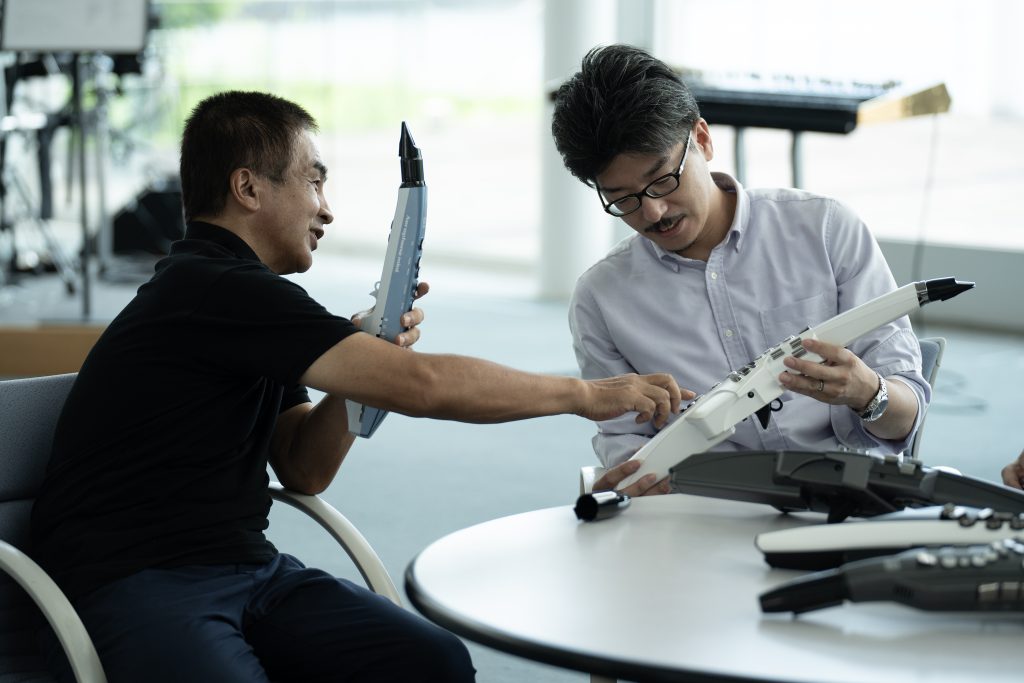
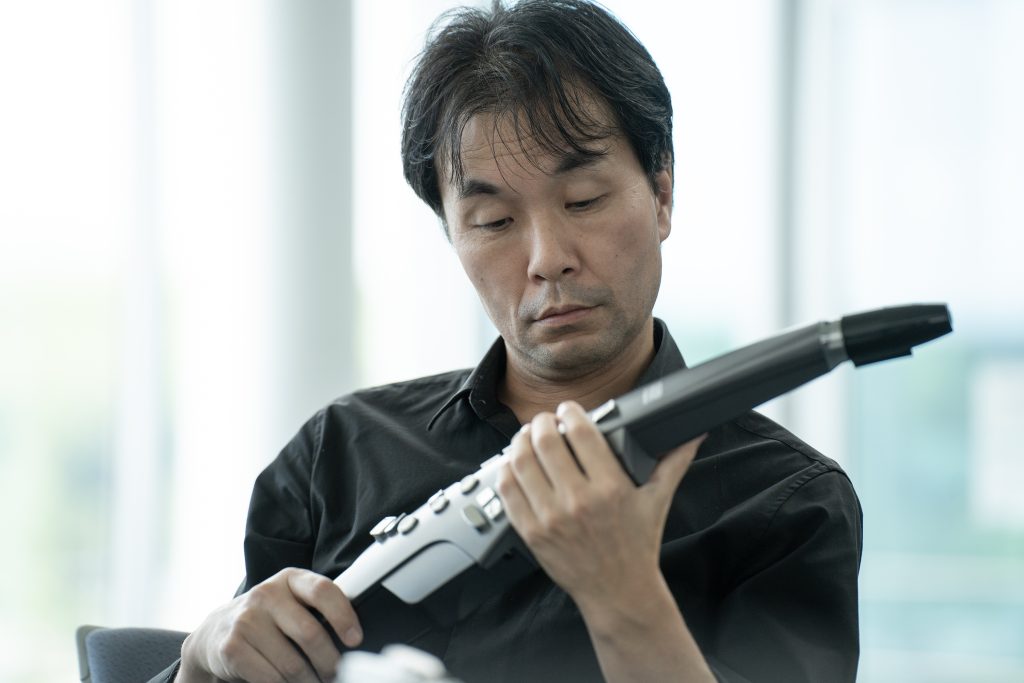
"I hope that by continuing to show that Roland is serious about electronic wind instruments, we can make the Aerophone a name people will trust."
Ryohei Kanayama
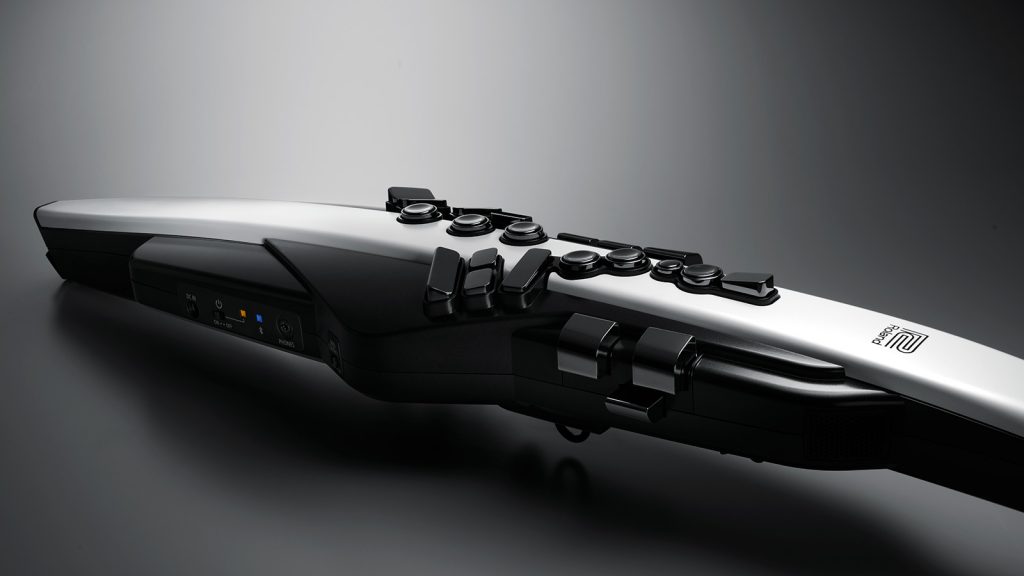
An Aerophone Future
With an eye toward the future, Terada expresses his desire for the Aerophone to move from being a new instrument to an essential one. “In the history of musical instruments, the Aerophone has only just been born,” he says. “There was a time when people laughed at the idea that electric pianos would someday be on par with acoustic ones. But now the electronic piano is indispensable.”
Terada has a clear vision for himself as well. “I’d like to spread the joy of music creation throughout the world more and more so that the Aerophone can become indispensable in the same way.”
